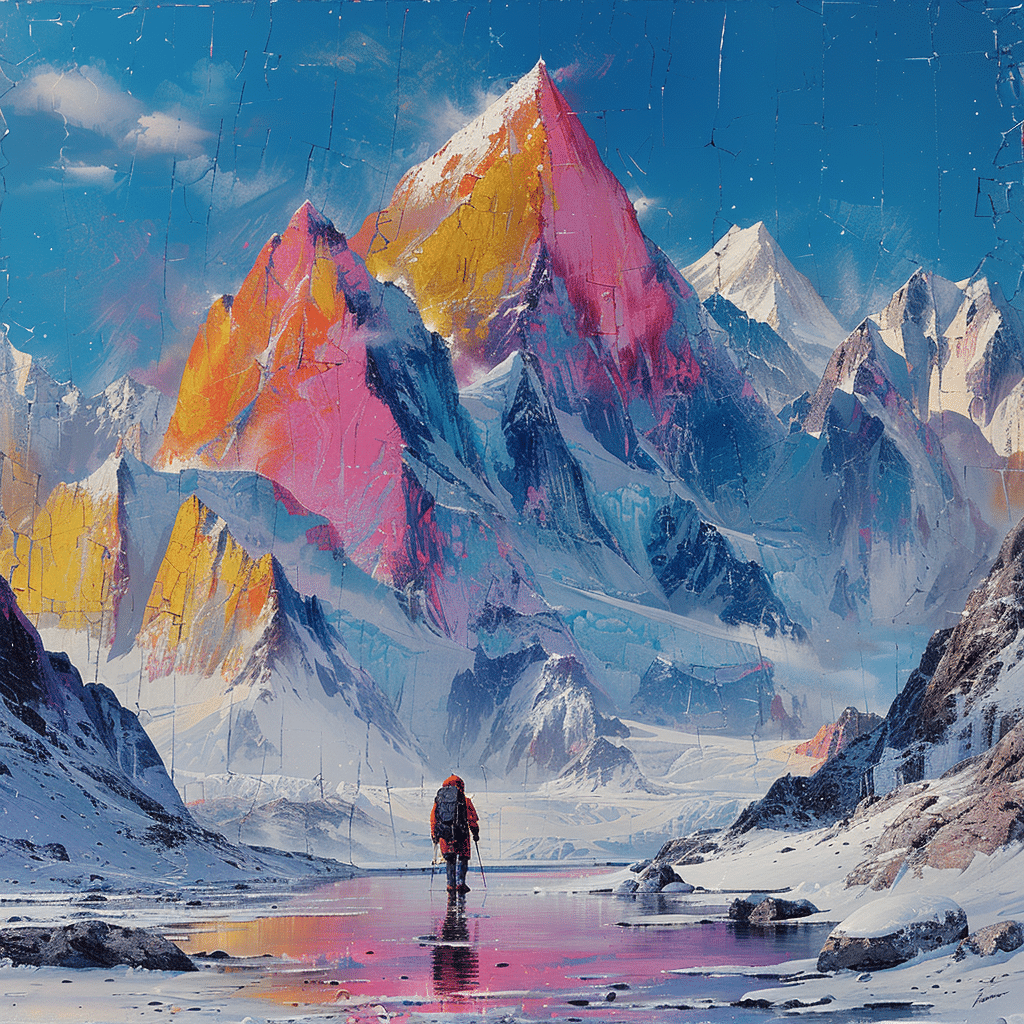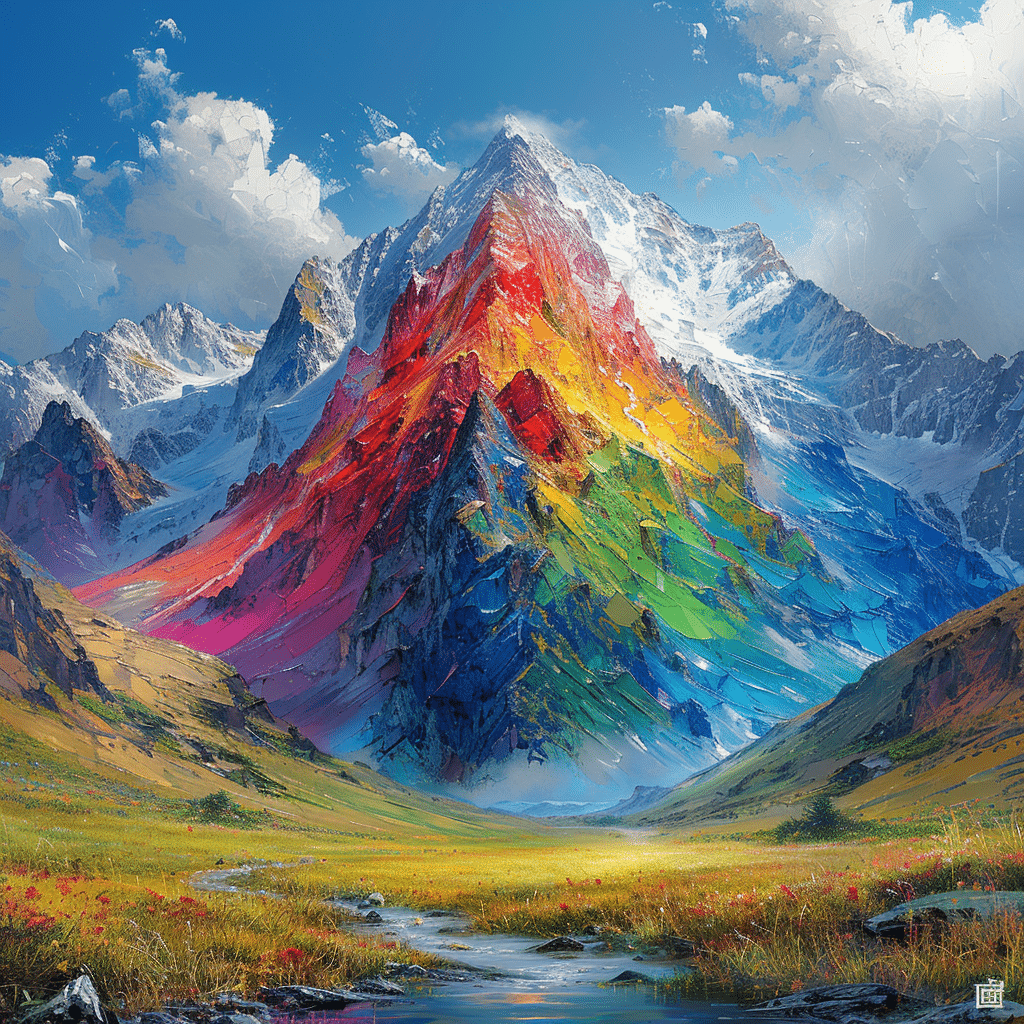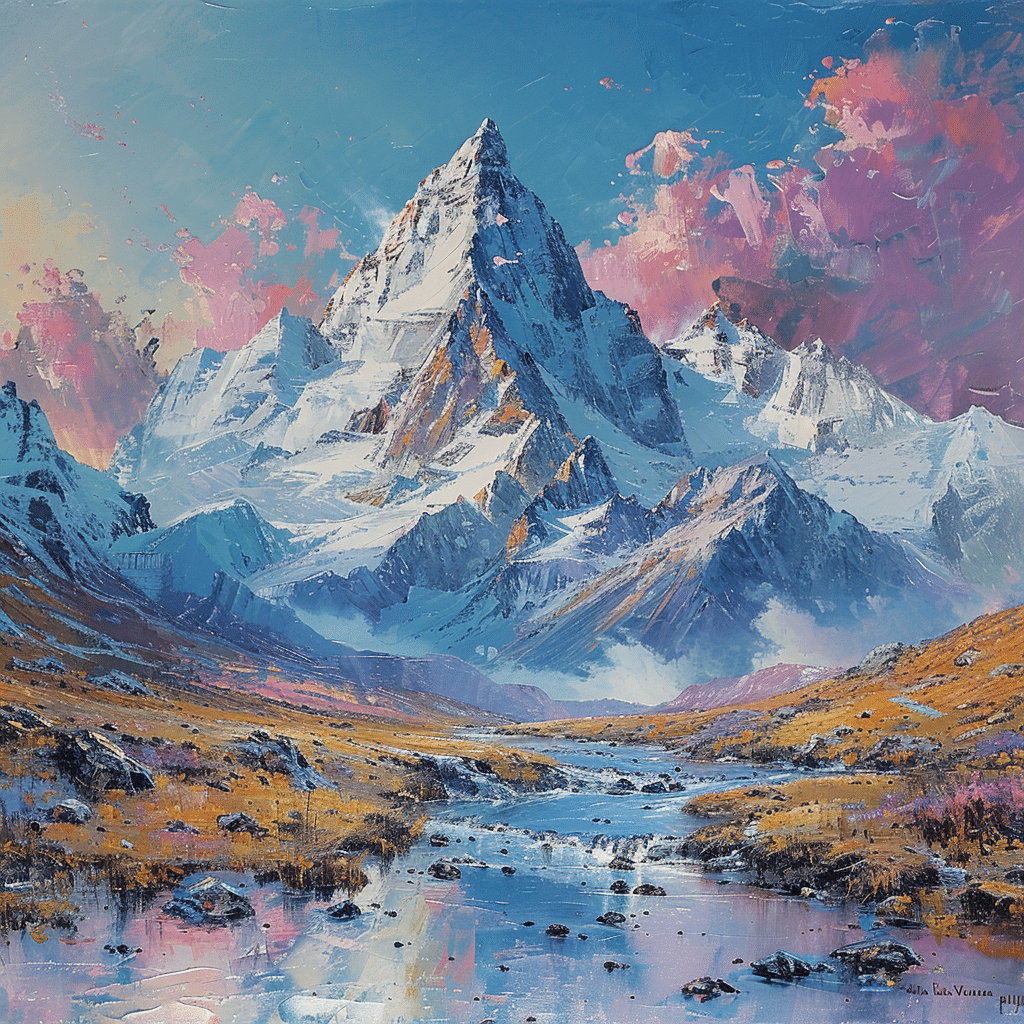The Allure and Ambiguity of Rainbow Valley Everest
The phrase ‘rainbow valley everest’ might evoke images of a vibrant landscape, hinting at a colorful utopia. However, those acquainted with Mount Everest’s lore recognize it as the heartrending site just beneath the summit, scattered with the remnants of those vanquished by the mountain’s ferocity. At altitudes exceeding 8,000 meters, where even cells gasp for oxygen, this expanse reveals the high cost of humanity’s age-old struggle against nature’s ultimate citadel. Here, we unearth the effervescent yet somber mysteries of Rainbow Valley, where the line between breathtaking wonder and poignant tragedy is as thin as the air itself.
A Palette Among Peaks: Understanding Rainbow Valley Mt Everest
Rainbow Valley has earned its name not for natural flora but from the multicolored gear of those who fell to Everest’s wrath. A vivid array of jackets, oxygen tanks, and tents paints a divergent picture of demise and determination. Each relic is a somber bookmark in the narrative of Everest, assigning faces and names to what would otherwise be an abstract statistic. We examine not just Rainbow Valley’s history but also the emotional weight it bears, alongside the environmental concerns it raises. How does this striking montage of mortality affect our dialogues on preserving the sanctity of Everest?

| Topic | Description |
|---|---|
| Name | Rainbow Valley |
| Location | Below the northern ridge on Mount Everest, stretch of the valley lies above an altitude of 8000m |
| Significance | Named for the multicolored gear of fallen climbers, including clothing, oxygen tanks, backpacks, and tents |
| Notoriety | Known for the numerous remains of climbers who perished on Mount Everest |
| Sleeping Beauty | Francys Arsentiev, the first American woman to summit without supplemental oxygen, who passed away during her descent in 1998; her body was respectfully relocated and is not within Rainbow Valley |
| Visibility | Colored gear and remains visible against the snowy backdrop, contributing to the area’s morbid rainbow-like appearance |
| ‘Death Zone’ | Climbers who ascend above 26,000 feet (the “death zone”) face extremely limited oxygen, leading to impaired judgment and potentially fatal health issues like heart attack, stroke, or severe altitude sickness |
| Altitude | Rainbow Valley is part of the “death zone”, making it extraordinarily dangerous and difficult to retrieve remains |
| Date of Interest | As of Aug 15, 2023, there are still numerous remains in Rainbow Valley; however, the area is constantly changing due to glacier movement and new expeditions |
| Environmental Note | The presence of bodies and equipment is considered an environmental concern, as it poses a challenge for preservation and clean-up efforts |
| Mount Everest | The world’s highest mountain, with its summit reaching 8,848.86m (29,031.7 feet) as of 2020 recalibration |
| Climbing Season | Most Everest summit attempts occur during a brief window in May when the weather is most favorable |
| Expedition Impact | Over the years, the accumulation of bodies and gear has sparked discussions on climber responsibility and respect for the mountain’s environment |
| Recent Initiatives | Periodic clean-up expeditions are organized to remove debris, including bodies when possible, to preserve the sanctity of the site |
Hearkening to History: The Tales of Sirvieron and Others
Everest is the cartographer of fates, much like the map Titanic route etched in the annals of maritime history. Sirvieron, an emblem of ambition turned tragic folk hero, along with many others, illuminates the impartial might of Everest over human ambition. We reflect on the poignant tales of climbers such as Sirvieron, and the history that Rainbow Valley holds. Stories of endurance and despair, stitched into the very fabric of this ‘, inspire both reverence and a renewed respect for the mountain.
Everest and Beyond: Global Consequences and Air Defense Identification Zone News
The conversation extends far beyond Everest’s slopes to issues sweeping the globe, including those as critical as air defense identification zone news. Just as geopolitical maneuvers navigate delicate airspaces, Rainbow Valley symbolizes challenges of ecological and ethical dimensions. We’ll delve into international collaborations that aim to shrink Everest’s ecological footprint — a pledge akin to the commitment of educators and leaders nurturing respect for our planet’s wonders.

Personal Stories: From Adam Lambert’s Daughter to Tyla’s Parents
The collective soul of mountaineering weaves a tapestry of shared dreams and tragedies, resonating through the endeavors of Adam Lambert’s daughter who channels her sorrow into advocacy for safer climbing. Meanwhile, the anguish and hope are palpable for families like Tyla’s parents, facing the agony of uncertainty. We stitch these threads into a narrative, showing the imprints left behind by Everest’s victims on the loved ones who echo their tales.
Cultural Reflections: Taylor Swiftkin and Violas Covent Garden
Everest’s resonance echoes in the arts, influencing the works of creatives like Taylor Swiftkin and the performances housed within Violas Covent Garden. These cultural depictions wrestle with Everest’s awe and fatality, reverberating in society’s collective consciousness. From melodies that scale emotional heights to dramas unfolding in the hallowed space of theatres, art mirrors the courage, beauty, and the ever-present threat that Rainbow Valley epitomizes.
Concluding Reflections: The Dichotomy of Everest’s Rainbow Valley
Figures like Dartmoor’s Benjamin Mee and Mairi McAllan reflect the spectrum of human engagement with Everest, one from a standpoint of adversity, the other of environmental stewardship. Rainbow Valley, in all its eerie splendor, remains a vivid reminder of our vulnerabilities and the imperative of conserving the majesty that surrounds us. After all, when the curtains close in Parkway Cinema, it’s the stories that linger, much like the profound tales of Everest—stories ripe with valor and vulnerability, etched into the alpine canvas for eternity.
Exploring the Colors of Death: Rainbow Valley Everest
Everest, the tallest mountain in the world, may be a peak that many climbers long to conquer, but it holds a more somber secret in its lofty heights — the Rainbow Valley. This area, just below the summit, is an arresting patchwork of color, not from nature’s palette but from the gear and bodies of the fallen climbers who never made it home. Speaking of not making it to your destination, you might want to say Buenas Noches Hasta Mañana to the idea of a peaceful slumber when you learn about the eerie and haunting presence of sleeping beauty everest, the nickname given to a female climber whose final resting place remains insight on the North Face route.
Did you know the Rainbow Valley obtained its name from the vibrant down jackets, tents, and sleeping bags that dot the landscape, reminiscent of a macabre tapestry woven by fate? Diving into the gruesome details could make even the coolest Mentalist cast character lose their calm façade. And while we talk of icy façades, the chilling reality of Everest’s perilous beauty makes it clear that each climber then pens their own tragic narrative, locked in time amidst the peak’s frozen tableau.
Transitioning from the morbid to the human spirit’s strength and resilience, the stories of those who’ve perished on Everest can strike a deep chord within us, much like a soulful country tune evoking the essence of life’s fragility, seen in the tragic ballads of Mindy Mccready. And in our technologically-advanced era, where Microsoft Chatgpt assists us indoors, up on Everest, it’s man versus nature in the purest form. While technology may offer us incredible tools for preparation and survival, it’s wise to remember that it’s only a slice of what’s needed to face the mountain’s unpredictable fury.
Each frozen visage and colorful relic in the Rainbow Valley serves as a potent reminder of the respect and humility we must carry into Mother Nature’s domain. Technique and training, no matter how masterful – a fact cynthia Blaise might nod in agreement with due to her expertise in dialect coaching and voice training – may not be enough in the face of Everest’s relentless conditions. It’s a grim spectacle, albeit one that underscores the inherent risks and the timeless allure that the mighty Everest continues to hold over the human psyche.

What is Rainbow Valley on Mt Everest?
Title: The Haunting Beauty of Everest’s Rainbow Valley and the Perils of the ‘Death Zone’
Is Sleeping Beauty still on Everest?
Rainbow Valley on Mount Everest, situated just below the mountain’s northern ridge, paints a macabre yet visually striking image of the world’s highest peak. At over 8000m above sea level, the area is punctuated with the remnants of failed expeditions—bodies of climbers draped in the vibrancy of their expedition gear. To the unknowing eye, the area could be mistaken for a colorful landscape, with the bright hues of jackets, oxygen tanks, backpacks, and abandoned tents. This grim spectacle on the slopes of Everest gave the “Rainbow Valley” its evocative name (reported March 20, 2017).
Why is Mount Everest called the Rainbow mountain?
The fate of “Sleeping Beauty,” the name given to American climber Francys Arsentiev who tragically died on Everest in 1998, serves as a stark reminder of the harsh realities faced by those who challenge the mountain. Respect remains the guiding principle for those she left behind, and as such, the precise location of her relocated body is a closely guarded secret to prevent her from becoming a mere marker on the ascent (according to information as of August 15, 2023).
What is the dead zone on Everest?
Everest’s Rainbow Valley, in part due to the vibrant clothing that lies there, perpetuates the mythos of the mountain, but the ‘death zone’ adds a critical layer to the narrative. As climbers surpass an elevation of 26,000 feet, they enter an environment of fatally scarce oxygen levels. Here, cellular breakdown begins, judgment falters, and the risk of catastrophic health events soars. In such dire conditions, some may question how long one can survive – the truth is, time in the death zone is severely limited before the body succumbs to the sheer altitude (noted September 5, 2023).
Why is Rainbow Valley so sacred?
Rainbow Valley is not only a testament to the devastating beauty and dangers of Mount Everest; it is considered sacred due to the lost lives it embodies. Countless climbers have perished in this region, and although exact figures continue to evolve, numerous bodies remain within the valley’s stretch as of the last report on August 15, 2023.
How many people died in Rainbow Valley Mount Everest?
Questions regarding the minutiae of climbing Everest—such as the need for climbers to wear diapers, or the current location of well-known markers like “Green Boots,” a deceased climber wearing distinctive footwear, or Rob Hall’s body—speak to the morbid curiosity that Everest provokes. While answers to these may vary (and in some cases, as for bodies remaining visible, circumstances change with new expeditions), they underscore Everest’s dual nature as a marvel and a mausoleum.
Do Everest climbers wear diapers?
Fundamental to climbing history, some have indeed summited Everest without supplemental oxygen, but these feats are few and rare, highlighting the exceptional challenge Everest poses to human limits.
Is Green Boots still visible on Everest?
The decision to climb Everest is not only a personal challenge but also a financial one, with costs ranging into the tens of thousands, varying per expedition and logistics.
Where is Rob’s body on Everest?
When delving into what predominantly causes fatalities on the mountain, we find that it is often a combination of severe weather, altitude sickness, rapid ascent without proper acclimatization, and the potentially fatal effects of the death zone.
How long can you stay in the death zone on Everest?
As for the Rainbow Valley itself, it is not a climbable route – it serves more as a part of the greater Everest panorama and a stark reminder of the very real dangers at high altitude.
How long does it take to climb the Everest?
Finally, adding a vibrant but tragic aspect to Mount Everest’s iconic imagery, the colorful part—both literally and in terms of human interest—is indeed the Rainbow Valley, a place of reflection for the climbers who dare to touch the roof of the world.



